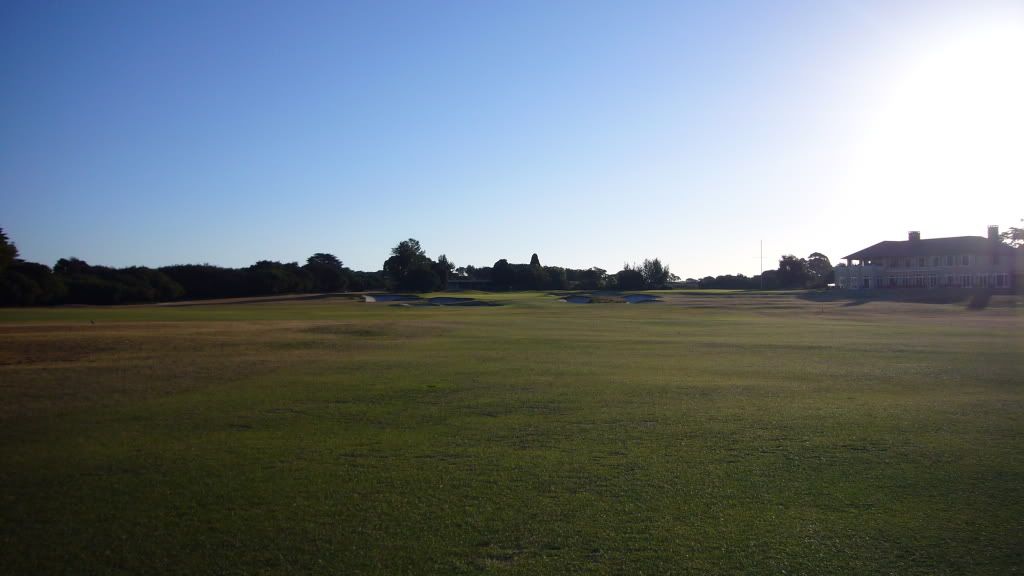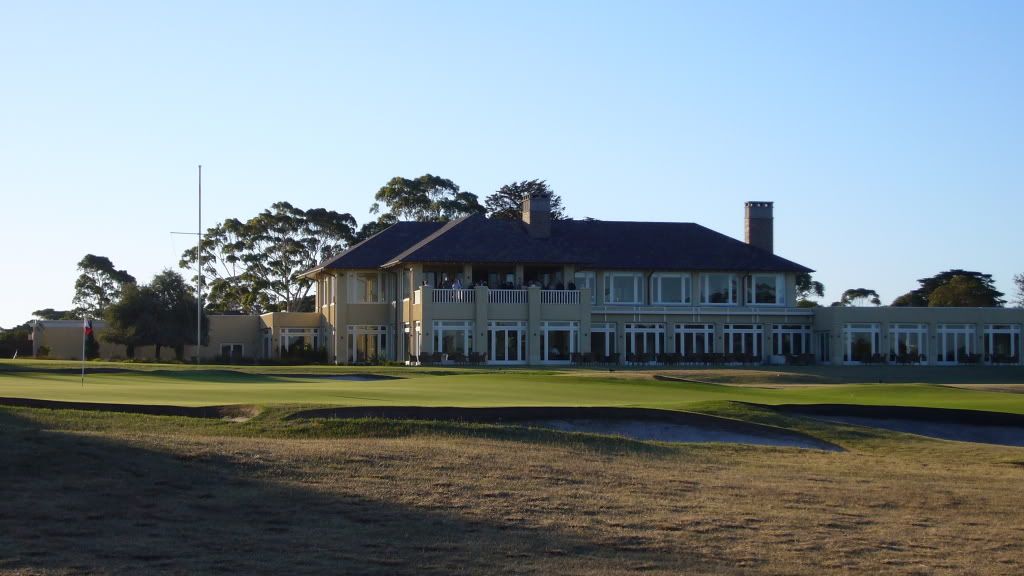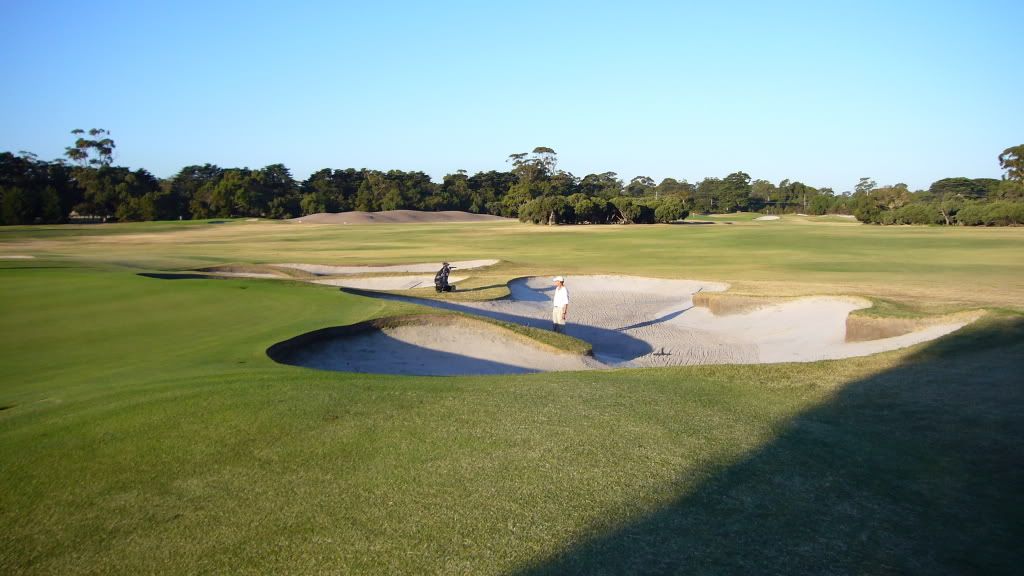How many times must we hear how wide the 1st (RMW1)? It’s meant as an example, but when the 1st is the only hole offered as example then one wonders about the catholic claim. Because the 1st seems to be the only example raised, we infer a rationale from the Golden Age: that in the days before driving ranges golfers needed room to recover.
And that is not Royal Melbourne at all. The 1st is not meant as a warmup any more than the 1st is offered as an excuse. The lie to the inference is given by Alex Russell’s 443-yard 18th, which serves as the ultimate hole not only on the Composite but his East as well. The 18th is as wide as the 1st.
Royal Melbourne was meant to be big enough for you and me.
The 1st is emblematic of the Composite (and of the West). The 18th is emblematic of the Composite (and of the East). East and West do meet, and make a harmony in the Composite. But where the West begins in a single bunker, the East ends in a necklace. The 18th will see you through to the clubhouse beyond, but last you will have to negotiate what you negotiated first: a wide fairway that paradoxically demands precision, an enormous green, sand to play away from.
The approach to 18 green, in the gloaming: 180 degrees of width:
The green’s site is subtle and excellent. Nudged into a rise gentle enough to escape notice from the dull of observation. Of course, the bunkering – lacy, sculpted, plentiful – tends to draw one’s attention away from the green, and yet through its carvery break up the slope, a concept familiar to camouflage experts.
There is a slope in here, but the golfer can be forgiven if he doesn't see the hill for the sand:
 The golfer who discovers a bunker will earn the sad task of surveying the slope from fairway to green – a grade “compressed” into a bunker's face:
The golfer who discovers a bunker will earn the sad task of surveying the slope from fairway to green – a grade “compressed” into a bunker's face:
When we walk off the green, we look back. We look away and close the circle: the 1st green in the distance, calling us back....
Mark